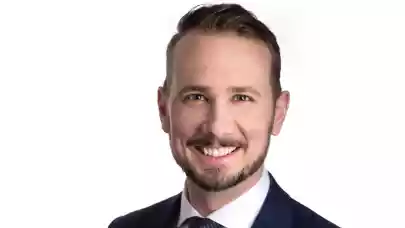
While international investors remain cautious, local players from CEE remain actively engaged, opportunistically monitoring the market, and taking advantage of reduced competition. Gábor Zeller, Senior Director, Capital Markets at iO Partners Hungary, talked to Property Forum about key investment trends and shared his market expectations for the rest of the year.
Gábor Zeller is a speaker at this week’s CEE Property Forum 2023 in Vienna where he’s joining a panel discussion on the important role of local investors.
What are some of the investment trends you are seeing in Hungary and the wider CEE region?
In line with global trends, CEE is experiencing subdued investment activity influenced by an uncertain macroeconomic outlook. Many Western investors, who were previously active in the CEE region, have now shifted to a cautious approach, waiting for new data points to emerge that will determine new pricing levels. Meanwhile, local players from the region remain actively engaged, opportunistically monitoring the market, and taking advantage of reduced competition. In the absence of readily available benchmarks, investors are comparing local projects to opportunities in other Western and Southern European geographies. These factors contribute to delayed decision-making processes and significantly extended transaction timelines. When it comes to asset classes, office properties are no longer the most preferred choice, whereas retail parks are gaining increased attention. Logistics properties continue to be at the forefront of investors' wish lists.

Gábor Zeller
Senior Director, Capital Markets
iO Partners
What will be the investment volume attracted by Hungary’s commercial sector this year and which segments are driving the deal-making activity?
In Hungary, less than €250 million was transacted over the first six months making it the weakest half-yearly performance in a decade. Unlike previous years, where office building transactions accounted for approximately 60-70% of the total turnover, in H1 they only contributed to a quarter of the investment volume implying investors having reservations towards the asset class. On the other hand, retail and especially retail parks are gaining momentum and have generated another quarter of the investment volume to date. The remaining portion of the H1 volume came from the sale of a five-star hotel in downtown Budapest. Interestingly, no deals have been concluded in the logistics segment so far. However, we anticipate a change in the second half of the year as there are several logistics parks, office buildings, and convenience retail assets in the sales pipeline that are expected to close before the year's end. In total, we anticipate that the annual investment activity in Hungary will reach approximately €600-700 million by the end of the year.
Are CEE-based markets doing enough to attract new property investors?
In the first half of the year, total investment activity in CEE decreased by approximately 65%, which is consistent with the slowdown observed in Europe and the United States. Therefore, the region is not necessarily underperforming global trends. Currently, much of the investment activity is being driven by domestic and regional capital, which is more accepting of local risks. International capital on the other hand used to benefit from higher returns in the form of yield premiums compared to Western Europe. Much of this premium has melted down as the repricing in Western Europe was much faster. As a result, yields need to soften further before international investors can re-enter the CEE region in large numbers. Ending the conflict in Ukraine or resolving the relationship between local governments and the EU can also act as a catalyst for attracting new investors. It's worth noting that some investors from new geographies like South Africa or the Baltics are already actively monitoring the region, searching for suitable investment opportunities. The large scale of the Polish economy and the attractive returns offered by Romania make these markets particularly interesting for new capital, but there are examples outside of these locations. For instance, in Budapest, we have just sold RoseVille, a grade-A office building to a new market entrant.
Will domestic investors continue to play a strategic role in CEE property markets going into 2024?
The region exhibits diversity in terms of transaction activity, with the extent to which domestic capital plays a role varying across countries. Poland stands out as a country where foreign, non-CEE capital has dominated, accounting for over 80% of investments in the past five years. Romania follows with approximately 60% of investments coming from abroad. In contrast, Hungary, Slovakia, and the Czech Republic traditionally have a higher presence of local investors, with domestic and regional capital responsible for over 50% of deals between 2017 and 2022. With the withdrawal of foreign investors, we see CEE investors gaining dominance over the region in general. Notably, Czech, Hungarian, and Slovakian investors have secured some of the benchmark deals even in Poland during the first half of 2023. We anticipate that this trend will persist into 2024, with domestic and regional players remaining highly competitive and continuing to acquire core assets at or near current pricing levels.
How are investors managing the funding side of new transactions as euro interest rates are still going up?
Equity financing holds a pivotal position in today's market. Given that financing costs are comparable to the level of cap rates investors are struggling to leverage their returns and pursue fewer opportunities. Therefore, the prospect of taking over existing financing terms as part of the transaction can be a real game-changer and we are advising clients exploring this route when preparing for a disposal. Besides the cost factor, the availability of financing presents another hurdle. Banks tend to adopt a conservative approach, providing financing primarily to buildings with established ESG credentials. Unfortunately, minimal financing options are accessible for ESG retrofit projects, creating a real Catch-22 situation.



